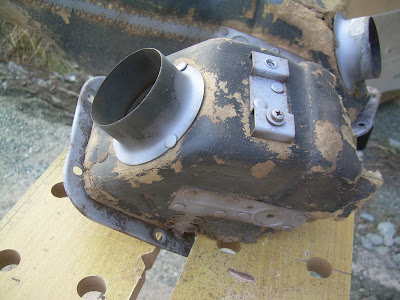The anchor locker ended up bullet proof. No worries about an anchor banging around in rough weather.

I finally finished the bogging around HD inserts and other joins, now ready for laminating the decks.

Aft deck being vacuum infused. I really like the method, but I would not recommend it to anyone on a one off hull. If you have moulds however, or for flat panels...

Decided on regular vacuum baging on the rest of the deck. Fabric being cut to size and kept in place with 3M 77?

Vacuum bag cut and attached along one side.

Peel ply, release film, bleeder and unidirectional reinforcements ready cut, waiting for the glueing party.

Everything safe under vacuum.




















































